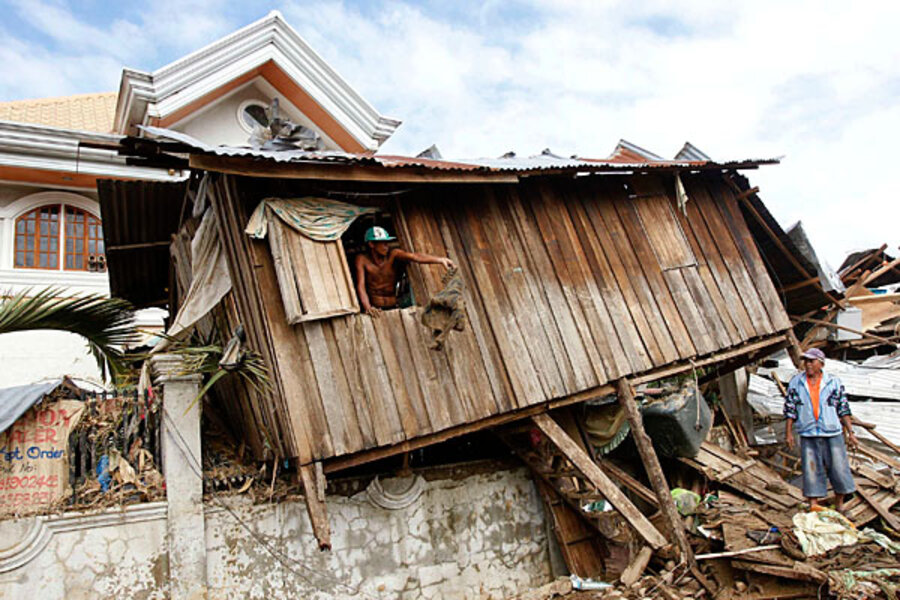Typhoon Sendong recovery efforts begin in Philippines
Loading...
| ILIGAN, Philippines
Disaster agencies on Monday delivered food, water, body bags, and medicine to crowded evacuation centres in the southern Philippines as officials ordered the digging of graves after hundreds died from flash floods.
The national disaster agency said 684 died after Typhoon Sendong (also known as Typhoon Washi) slammed ashore in Mindanao island while residents slept at the weekend, sending torrents of water and mud through riverside villages and sweeping houses out to sea.
The Philippine National Red Cross put the toll at 652 killed and more than 800 missing. The casualties far exceeded the 464 people killed in 2009 when a tropical storm dumped heavy rain on the main Luzon island, inundating nearly the entire capital Manila.
IN PICTURES: Typhoons hit the Philippines
The head of the national disaster agency, Benito Ramos, had earlier suggested digging mass graves to prevent outbreaks of disease, but the two worst hit cities took different approaches.
Officials in Iligan said they would bury about 80 bodies at a public cemetery on Monday -- but in individual plots and tombs. Workers were rushing to construct tombs.
"Definitely, we are not burying them in mass graves. That is not allowed any more," Levi Villarin, city health officer, told Reuters.
In Cagayan de Oro, further east along Mindanao's north coast, officials moved hundreds of unclaimed bodies to a sanitary landfill for a mass burial/
Vicente Emano, mayor of Cagayan de Oro, said officials were planning to put some bodies into refrigerated trucks until law enforcement agencies identify the dead through fingerprints and DNA tests.
President Benigno Aquino is due to visit the two cities on Tuesday.
The Maoist-led Communist Party of the Philippines (CPP) rebels, which have battled government forces for 40 years, said they had declared a six-day unilateral Christmas truce to help those affected by the floods. The government last week announced a 19-day truce.
SEARCH CONTINUES
The government said nearly 143,000 people were affected by the flash floods and landslides, of which 45,000 people were staying in evacuation centres. The rest stayed with relatives.
Save the Children, a London-based non-government organisation, estimated more than half of those affected were children.
Ramos, head of the national disaster agency, said six helicopters and two dozen boats were dispatched to search for survivors and drowning victims.
"From the helicopter, we saw four major river systems, all houses along the riverbanks were totally destroyed," he said.
Disaster officials said the United Nations Office for the Coordination of Humanitarian Affairs had started a damage and needs assessment survey to help the government and aid agencies respond to the disaster.
Foreign governments have sent condolences and promised to donate food and other relief supplies.
The Agriculture department said about 8.1 million pesos ($184,000) in mostly rice and corn crops were lost.
Mindanao island, the southernmost in the Philippines, is a mineral-rich region not normally in the path of the average 20 typhoons that hit the Southeast Asian country each year.
(Additional reporting by Karen Lema, Rosemarie Francisco and Manny Mogato; Editing by Ron Popeski)





